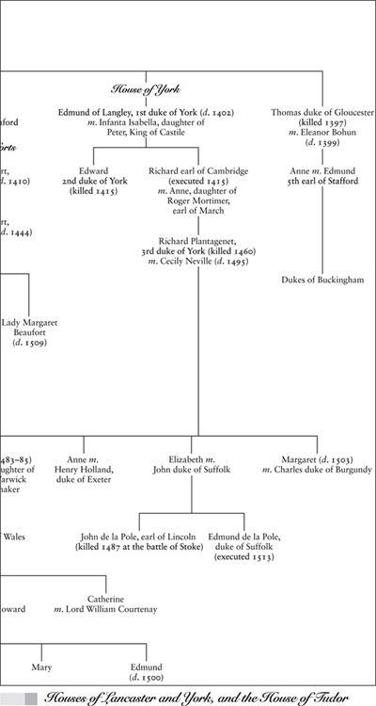THOMAS PENN
Winter King

ALLEN LANE
PENGUIN BOOKS
List of Illustrations
1. Frontispiece of the ‘Liber de optimo fato’, or ‘Book of Excellent Fortunes’, by William Parron. (By permission of the British Library)
2. Henry VII. Terracotta portrait bust by Pietro Torrigiano. (Copyright © Victoria and Albert Museum, London)
3. Elizabeth of York, Henry’s queen. (Copyright © National Portrait Gallery, London)
4. A laughing boy, thought to be Prince Henry, by Guido Mazzoni. (The Royal Collection, copyright © 2011 Her Majesty Queen Elizabeth II)
5. Lady Margaret Beaufort. (By permission of the Master and Fellows of St John’s College, Cambridge)
6. Catherine of Aragon, aged about twenty, by Michael Sittow. (Kunsthistorisches Museum, Vienna)
7. Richmond. Drawing by Antonis van Wyngaerde,
8. ‘Score cheque’ from the first day of the November 1501 jousts at Westminster, celebrating the marriage of Prince Arthur to Catherine of Aragon. (The College of Arms, London)
9. A group of plate-armoured jousters arrives at a tournament. (The College of Arms, London)
10. Informer’s report by John Flamank, detailing the secret conversation among Henry VII’s officials at Calais, September 1504. (The National Archives)
11. Richard Fox, Bishop of Winchester, lord privy seal and Henry VII’s diplomatic mastermind. Portrait by Hans Corvus. (Copyright © Corpus Christi College, Oxford, UK/The Bridgeman Art Library)
12. The death of Henry VII. Drawing by Garter king-of-arms Thomas Wriothesley. (By permission of the British Library)
13. From Thomas More’s coronation verses, on the rainstorm that disrupted Henry VIII and Catherine of Aragon’s procession through London, 23 June 1509. (By permission of the British Library)
14. Henry VII’s accounts. (The National Archives)
Map 1
England

Map 2
Western Europe




Houses of Lancaster and York, and the House of Tudor




Introduction
Henry VII ruled England for almost a quarter-century, from 1485 to 1509. During his reign, the civil wars that had convulsed the country for much of the fifteenth century burned themselves out. By its end, he had laid the foundations for the dynasty that bore his name: Tudor. He was a man with a highly dubious claim to the throne,

